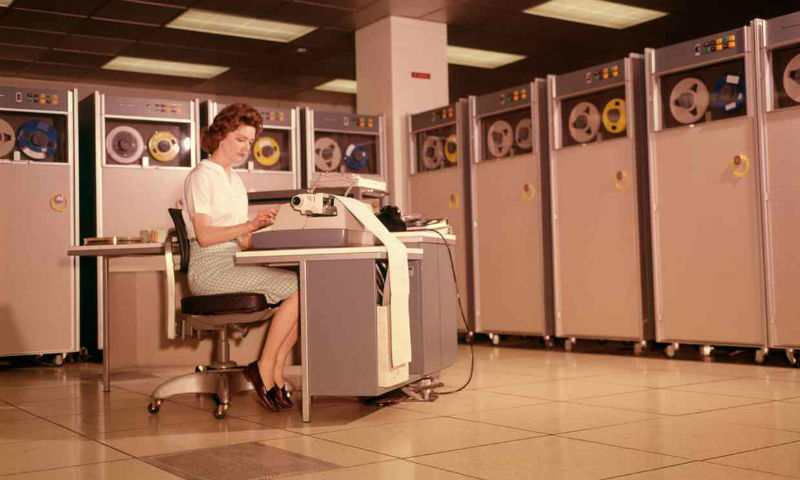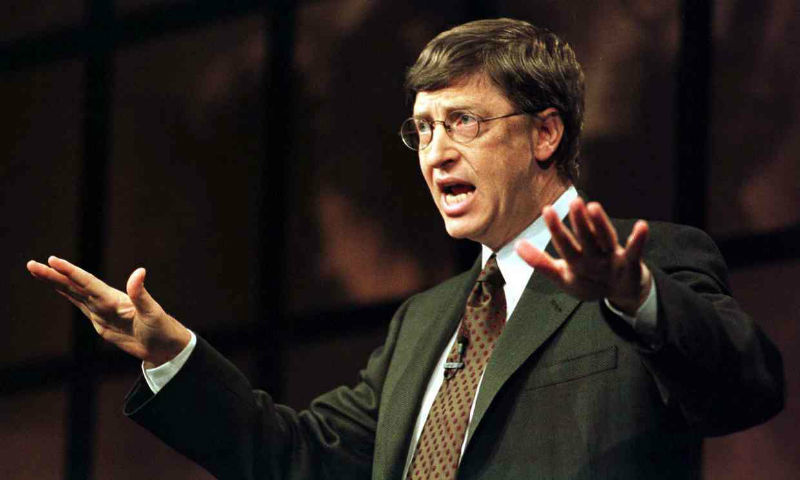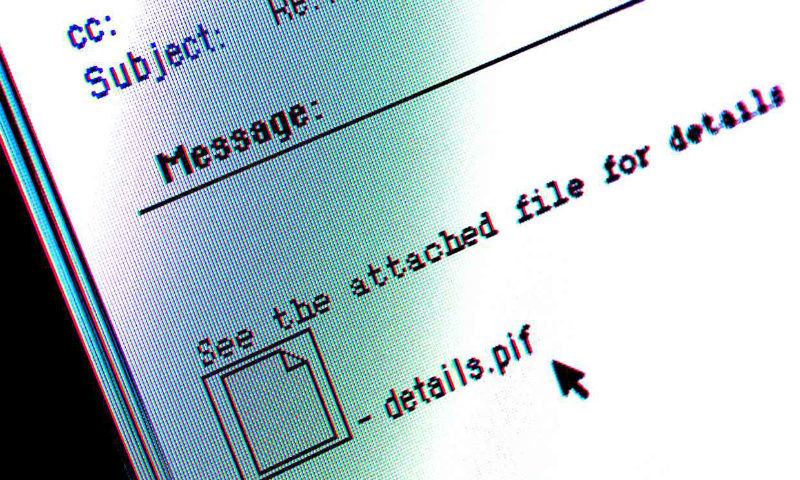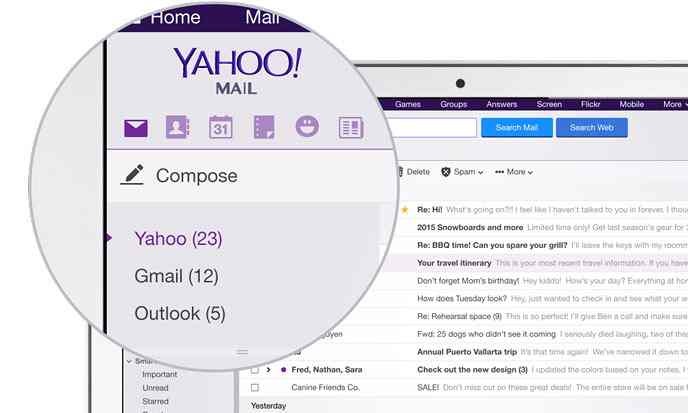From the communication tool of scientists to the world standard: A brief history of e-mail

E-mail is a revolution in the world of communication and, at the same time, a heavy burden of modern workers. Photo: Getty Images
In our blog, we already talked about why email will never die and will always remain an excellent means of communication for ordinary users and companies. It is time to carefully study the history of the phenomenon of email.
')
On March 5, 2016, Ray Tomlinson, the man who offered to use the “@” (at-sign) symbol in email addresses, passed away , but his invention of allowing email messages to flood the Internet and our mailboxes will live. In this article, we will talk about how Tomlinson started and about the evolution of e-mail over the past half century.
First Email - 1965

In the 1960s, when the first email was sent, the computer could not be imagined without a roll of paper tape. Photographer: G. Armstrong Roberts (H. Armstrong Roberts) / ClassicStock / Corbis
The first equivalent of a modern e-mail was sent in 1965 by scientists at the Massachusetts Institute of Technology as part of a time-sharing project. Such a system allowed several users working on remote terminals to access files and messages on a central disk.
Tomlinson and the @ symbol - 1971

The man who literally breathed new life into the old symbol "@". Photography: Advertising Prospect
According to one of the versions, the American programmer Tomlinson developed a method of sending electronic messages between computers over the Arpanet network (the predecessor of the Internet) for the Office of Advanced Research and Development of the US Department of Defense (DARPA). Then he suggested using the “@” symbol, which allowed sending messages to specific users on specific machines.
First e-mail standards - 1973

Before sending robots to the battlefield, DARPA takes over the Internet and email. Photography: HO / AFP / Getty Images
The first standard of e-mails was proposed in 1973 at DARPA, and by 1977, Arpanet already had standards that defined fields from "who" and "to whom", as well as the opportunity to automatically respond to the received e-mail or send it to any address.
Queen sends her first email - 1976

If the queen knew that, thanks to e-mail, her favorite postage stamps would lose popularity, would she send that letter? Photography: Martin Keene / PA
Queen Elizabeth II sends an email over Arpanet, ahead of other heads of state.
Eric Schmidt Develops BerkNet Network - 1978

Before joining Google, Schmidt developed one of the first intranet messaging systems over a serial connection. Photo by Scott Olson / Getty Images
Eric Schmidt (Eric Schmidt), who subsequently headed the board of directors of Google and oversaw the implementation of Gmail, created the Berkley Network as part of his master's work in 1978. This service allowed to send messages consistently.
The program EMAIL - 1979 is developed.
At the age of 14, Shiva Ayyadurai wrote a program called EMAIL for the University of Medicine and Dentistry of New Jersey, which allows you to send messages within the university. In 1982, Ayadurai registered the copyright of the term "email", but the origin of the word remains in question .
The advent of Microsoft Mail - 1988

Calm down, I'm sure this hype with an email will soon settle down. Photo: Lou Dematteis / Reuters
The first version of Microsoft Mail was launched in 1988. The program was supported by the Mac OS and allowed users of the AppleTalk network to send messages to each other. In 1991, the second version was launched for other platforms, including DOS and Windows. It served as the basis for the subsequent Microsoft mail systems - Outlook and Exchange.
CompuServe launches first Internet mail service - 1989

CompuServe was one of the first Internet service providers to offer their customers an email exchange service. Photo: Neal Lauron / Reuters
CompuServe was the first online service to offer an internet connection via dial-up telephone connections, and its proprietary email service allowed Internet users to send emails to each other. In 1997, CompuServe was acquired by AOL.
Launch of Lotus Notes - 1989

Thanks to Lotus Notes, millions of employees were able to send e-mails, although in 1989, e-mail looked different. Photo: Roger Tooth for the Guardian
The product was first released in 1989 by the American company Lotus Development, which in 1995 was taken over by IBM.
The origin of spam - 1990

What's wrong with spam? Photo: Alamy
The history of spam began in 1978, when 400 spam messages were sent to Arpanet for the first time, however, only in the 90s, when the Internet became accessible to millions of users all over the planet, spam covered electronic bulletin boards, and later all mailboxes .
In April 1994, the first case of spamming for business purposes was registered when two lawyers from Phoenix, Laurence Carter and Martha Siegel decided to attract new clients. Later, the couple wrote a book about it.
Attachments - 1992

Attachments appeared in 1992, becoming another carrier of computer viruses, including Sobig F. Photo: Roger Tus for the Guardian
The ability to attach files to emails appeared after the release of the MIME protocol (“Multipurpose Internet Mail Extensions” - multi-purpose Internet mail extensions). At that time, the volume of mailboxes was limited, so users had to delete emails with “heavy” attachments in order to clear the space for receiving new messages.
Outlook and Aol - 1993

The legendary AOL CD-ROM, which was in almost every American home. Photo: David Sillitoe for the Guardian
The first version of Microsoft Outlook was released in 1993 as part of Exchange Server 5.5. At the same time, the American Internet service providers AOL and Delphi combine their email systems, paving the way for modern, overloaded email systems.
Hotmail launch - 1996

Hotmail, owned by Microsoft, was one of the first popular email services available via the Internet. Photo: Sean Smith for the Guardian
In 1996, one of the most popular mail services was launched under the name “HoTMaiL”, developed by Sabeer Bhatia and Jack Smith. He was distinguished by the fact that he was not tied to a specific Internet service provider and accepted a new format of HTML e-mails - hence the style of the brand.
Hotmail was bought by Microsoft in 1997, shortly thereafter renamed to MSN Hotmail, then to Windows Live Hotmail, and in 2013 replaced by Outlook.com.
Launch of Yahoo Mail - 1997

Yahoo Mail has been upgraded several times in its 9-year history. Photography: Yahoo
In 1997, a year after the launch of Hotmail, Yahoo buys mail service RocketMail from the company Four11, and on its basis launches the service Yahoo Mail.
“A letter to you” and not only to you - 1998

Shot from the romantic comedy “You Have a Letter,” starring Tom Hanks and Meg Ryan. Photography: Warner Bros
For most users, the receipt of a new email was firmly tied to the well-known AOL sound notification, which formed the basis of the 1988 romantic comedy “ You Have a Letter, ” starring Tom Hanks and Meg Ryan.
By the end of the 90s, spam is becoming a serious problem - more and more marketers are starting to use this almost free means of disseminating information and clog their mailboxes. In 1998, the term "spam" was included in the Oxford Dictionary.
In 2002, the European Union issued an Electronic Communications Confidentiality Directive, one of the sections of which regulated spamming. From this point on, it was forbidden to carry out electronic distribution for marketing purposes without the prior consent of the recipient
In 2004, similar laws were passed in the United States, but they were ineffective in the fight against spam.
Gmail launch 2004

Gmail was originally called Googlemail. Photography: Dean Murray / Rex Features
The popular mail service Gmail, developed by Paul Buchheit in 2001, was originally intended only for internal use by Google employees. The development of the project was kept secret until the start of closed beta testing in 2004. Only in 2007, the service became available to everyone, and in 2009 - out of the status of the beta version.
See also: How did the Gmail mail service evolve
The beginning of the fight against spam - 2005

Since the beginning of the 2000s, mail protocols begin to fight spam. Photography: Ian Waldie / Getty Images
The first e-mail standard, designed to reduce the flow of spam using sender identification technology, was published five years after development began. The Sender Policy Framework protocol was subsequently used in many programs to block spam. In addition, the DomainKeys Identified Mail (DKIM) standard was released, which combined several existing anti-phishing and anti-spam methods.
Users begin to view their mail from mobile - 2007

Steve Jobs and could not assume that the icon for the iPhone with the image of the letter will become a symbol of hundreds of unread messages. Photography: Paul Sakuma / AP
Apple released its first iPhone in 2007, giving the general public the ability to view mail from a mobile. Up to this point, email support by user smartphones was usually limited. At the same time, owners of BlackBerry business smartphones from RIM got the opportunity to work in e-mail as early as 2003.
Sea of Mail - 2015

Under the weight of emails. Photography: LifeStyleKB / Alamy / Alamy
Despite the fact that in the early stages of its existence, e-mail was used only for internal communications, today it has become an integral part of our daily life. According to data provided by the research organization Radicati Group, in 2015 there were about 4.4 billion e-mail addresses in the world, from which approximately 205 billion letters were sent daily.
By the end of 2019, this number is expected to increase to 246 billion.
Other materials on email in the Pechkin blog:
- Email, social networks, instant messengers: What does the media influence and how to choose them
- How to create email-auto-answers: Analysis of 100 applications to support services of IT companies
- Working with email: How to reduce the number of incoming messages to zero
- Why spam is so hard to beat
- Email and Security: Is it possible to protect email correspondence?
Source: https://habr.com/ru/post/303672/
All Articles